10 Accessories Under $100 to Winterize your Backpacking Setup
Making the jump from three-season to year-round backpacking may not be as daunting as it seems. With the addition of a few simple winter hiking accessories, a solid three-season setup can be completely transformed for winter weather. Most of these items are focused on keeping extremities warm.
This means your head, ears, fingers, and toes. If your dad is anything like mine, you’ve heard a bajillion times that your head is where “the majority of your heat is lost!” And anyone who has suffered frozen toes or fingers can tell you firsthand how essential our extremities truly are.
However, it’s worth addressing the fact that on their own, NONE of these items will replace sound sleeping and layering systems. In winter conditions, you’ll want to go for a sleeping pad with an R-value above 3.5 or double up your pads. Also, the combination of your sleeping bag and liner should be 10 degrees below the lowest temperature you’re expecting.
Once you’ve got those basics covered, these small winter hiking accessories can help transform a frigid sufferfest into an enjoyable backcountry experience.
 10 Winter Hiking Accessories Under $100
10 Winter Hiking Accessories Under $100
Sleeping Bag Liner: Sea to Summit Thermolite Reactor Extreme
- MSRP: $69.65
- Weight: 14 oz
Adding a sleeping bag liner instantly levels up any sleeping system. It adds WAY more warmth for less weight and less money than investing in a winter sleeping bag. This particular liner adds roughly 25 degrees to the low end of a temperature rating. It’s recommended to have a sleep system that’s about 10 degrees warmer than the lowest temperature you expect. So, with my 20-degree quilt paired with this liner, I feel comfortable pushing lows of 5-10 degrees Fahrenheit. I’ve already used it on a ~20-degree night in the Utah backcountry, and I was TOASTY in my 20-degree quilt. This was worth the investment tenfold.
Down Booties: Outdoor Research Tundra Aerogel
- MSRP: $89.00
- Weight: 9 oz
You know what sucks? Getting into your sleeping bag and waiting a solid 45 minutes for your toes to defrost. Or, being pulled into your tent early because socks and sandals won’t cut it outside. Swapping down booties for typical camp shoes in the winter will seriously up your game. On the JMT, I was extremely envious of my down bootied friends, as I looked down at my socks and Chacos.
Gaiters: REI Co-op Backpacker Low Gaiters
- MSRP: $44.95
- Weight: 6.5 oz
Nothing will make you hate your life more than wet socks and shoes. Keeping your feet dry is essential, and can be quite a challenge in the snow. These gaiters fit snug around your shoes and calves, keeping snow, mud, and debris out.
Traction System: Kahtoola MICROspikes
- MSRP: $69.95
- Weight: 11 oz
Microspikes save lives. If there’s any chance of snow on the trail, please please please put these in your bag. Best case scenario, you won’t have to use them. Traction is necessary for exposed stretches with steep-angled ice, but they help immensely through any snowy terrain. If you’re planning on climbing over snowy passes, consider bringing an ice axe as well.
Balaclava: Smartwool Merino 250
- MSRP: $40.00
- Weight: 1.76 oz
Your cheeks, neck, and nose need protection too. Pairing a balaclava with a beanie makes for one toasty head, which is essential for keeping your temperature regulated.
Gore-Tex Mittens: Mountain Hardwear FireFall 2
- MSRP: $70.00
- Weight: 8.1 oz
I don’t think I need to explain to anyone how horrendous cold hands feel. Pairing Gore-Tex mittens with a lighter glove inside is a tried and true winter method. For a liner glove, I recommend something with merino wool, like these lightweight ones from Smartwool.
Rechargeable Hand Warmer: Zippo HeatBank 9s
- MSRP: $39.95
- Weight: 5.52 oz
In the long run, a rechargeable hand warmer is much more sustainable and economical than single-use hand warmers. It’s designed to fit right into a jacket pocket and lasts between four and nine hours depending on which setting you use. No more waiting for feeling to slowly return to your extremities.
Socks: Sealskinz Waterproof All-Weather Mid Socks
- MSRP: $45.00
- Weight: lightweight
I’ll be honest, I haven’t yet made the jump to waterproof socks myself. However, based on extensive research (read: Instagram scrolling), Sealskinz seem to be a fan favorite. Pulling on wet or crusty socks in the morning just doesn’t put me in the best mood. These socks are designed to withstand the winter weather, while still remaining breathable.
Midlayer Pants: REI Co-op Teton Fleece Pants
- MSRP: $59.50
- Weight: 11 oz (estimate)
Too often, our bottom halves are overlooked when it comes to proper layering. A pair of merino wool base layers under rain pants is a great start, but adding an extra midlayer in the coldest months is a one-way ticket to cozy town. These fleece pants will keep you toasty in your sleeping bag or breaking trail in the snow.
Hat: Patagonia Speedway Beanie
- MSRP: $39.00
- Weight: 5.6 oz
Paired with a merino wool balaclava, the moisture-wicking fleece lining on this beanie is meant to keep you warm while exercising. Most hikers probably already have a handful of beanies to choose from, but for the winter, I highly recommend something lined with fleece.
BONUS: NEMO Switchback CCF Pad
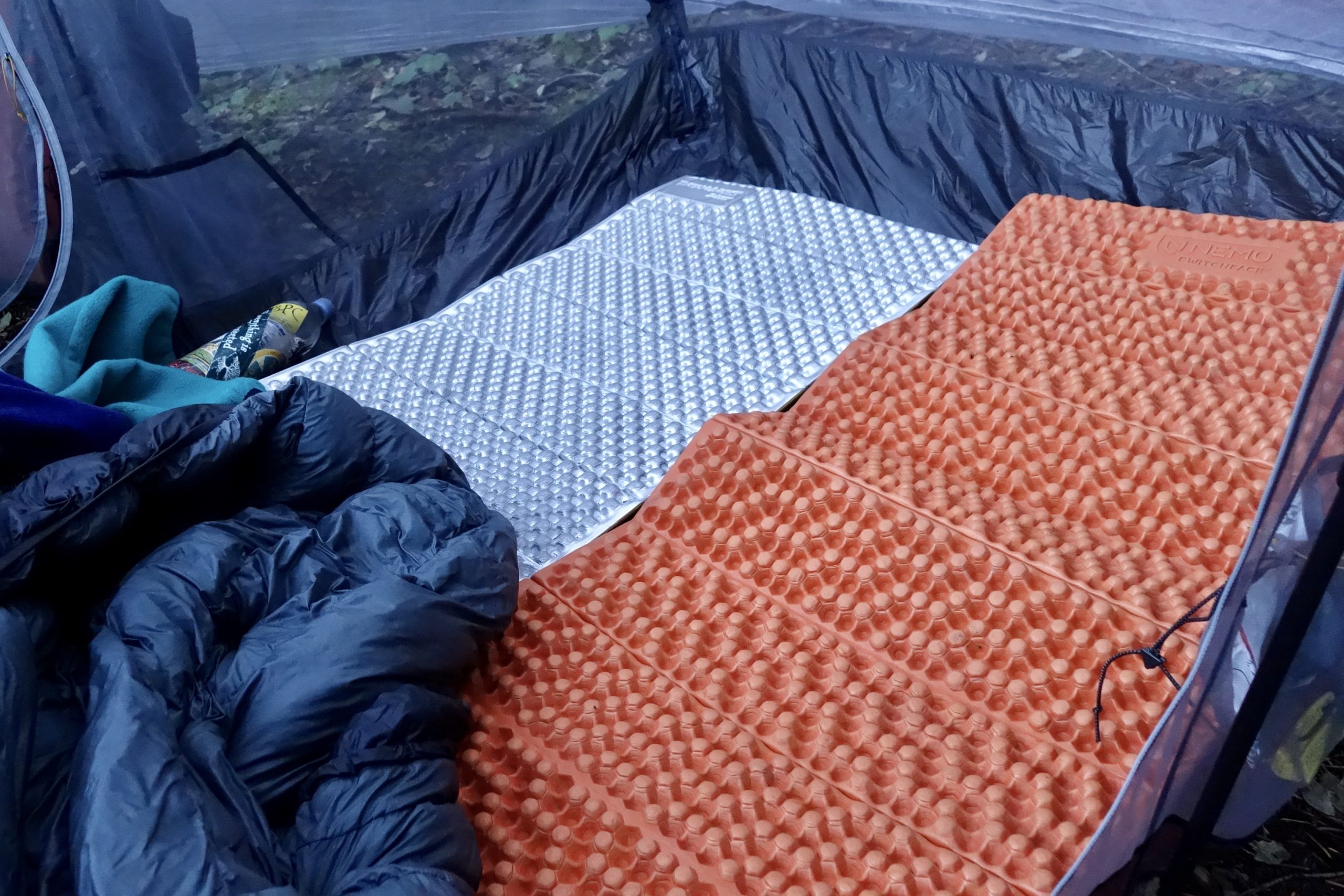
Winter hiking accessories alone won’t cut it. You need a robust sleep system, too. Photo via Owen Eigenbrot.
- MSRP: $49.95
- Weight: 14.5 oz
It’s not really an accessory, but a CCF pad slipped under your go-to sleeping pad comes in well under $100 and can be essential to winterize your sleep system. And as stated above, winter hiking accessories alone won’t cut it: you also need proper layering and a warm sleep system to thrive on-trail in the cold of winter. Insulation is additive, so by including this pad in the setup you can increase your R-value by two without spending much money.
Which CCF pad is best? We compared the NEMO Switchback to its competitor, the Therm-a-Rest Z-Lite Sol, here.
Again, none of these items are meant to fully outfit you for the winter months. Rather, these accessories will supplement a sound layering and sleeping system.
What are your favorite winter hiking accessories? Let me know in the comments if there’s anything that ALWAYS ends up in your winter bag.
This website contains affiliate links, which means The Trek may receive a percentage of any product or service you purchase using the links in the articles or advertisements. The buyer pays the same price as they would otherwise, and your purchase helps to support The Trek's ongoing goal to serve you quality backpacking advice and information. Thanks for your support!
To learn more, please visit the About This Site page.

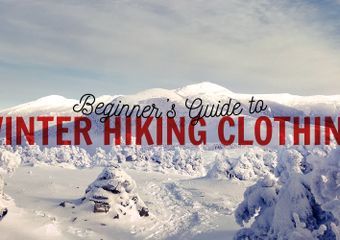
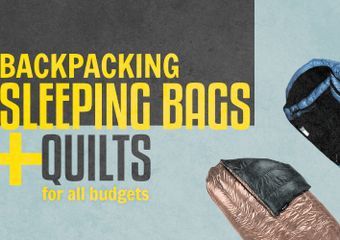


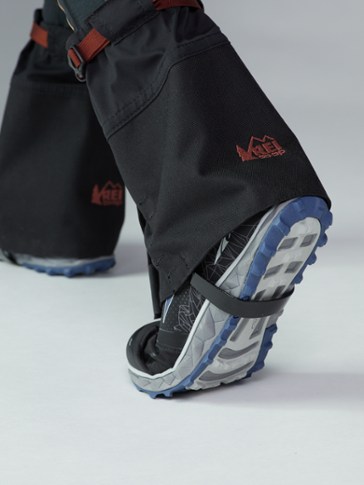

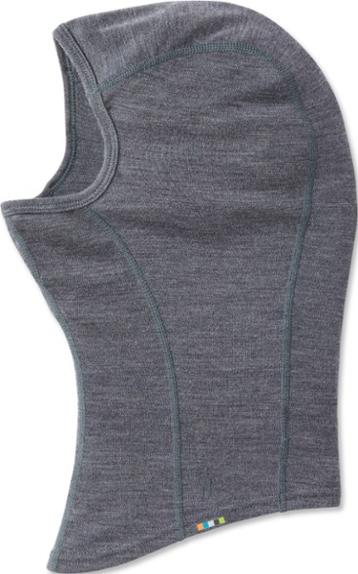






Comments 3
Sound advice, Katie! I leave near the AT in Virginia, and love winter camping and hiking. Mittens are way better than just gloves when it is 20 degrees or colder, and the combo of gloves inside gives you dexterity you will not have just with mittens. Other thoughts: Enlightened Equipment booties with synthetic insulation (they call them “sidekicks”) for wetter climates. The Thermarest Neo Air X-Lite and X-Therm pads are great for winter – comfortable with good R-values. Using them with a foam pad is a good practice, not only for insulation but to protect them from punctures (the Gossamer Gear thin pads are light and take up little space, and are good for this. Bob
Thanks for those extra tips Bob! One of my biggest fears is puncturing my sleeping pad – I never blow it up all the way in the case of a seam leak! I might look into those Enlightened Equipment ones, it sounds like they may be better for walking around in a snowy camp. I hope you have a wonderful winter season!
A merino wool or fleece neck gaiter is my favorite piece of winter gear! It makes me feel warm and cozy, keeps out drafts, and is also fashionable (Smartwool has great colors/patterns). If it’s not so cold I wear a lighter weight buff, which can be worn a number of ways as we all know. Usually I have both in my pack so I can switch out as necessary.